- +30 213 003 7600
- +30 213 003 7600
- info@hellagrolip.com
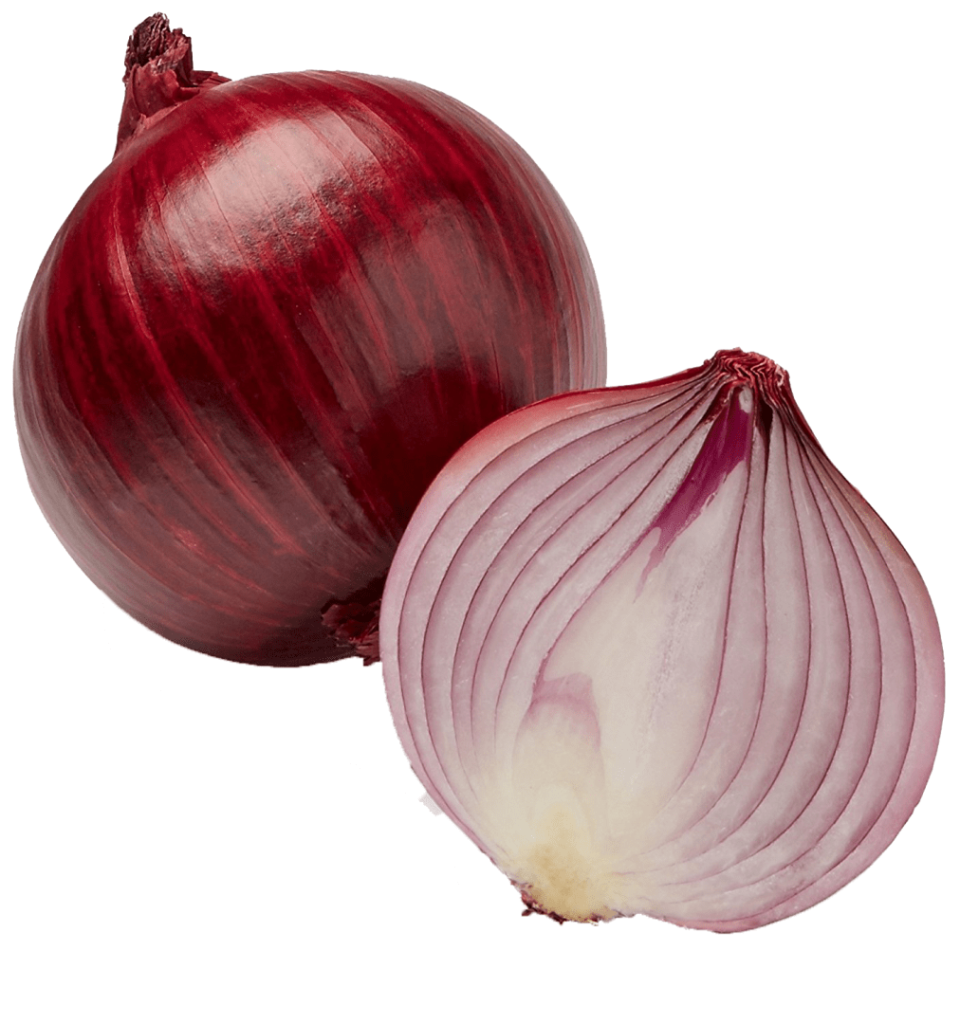
Onion crops thrive in a variety of soils. The soils considered ideal are those of medium and fine texture, sandy loam, warm, with good drainage and rich in organic matter. High yields are achieved in such soils, and bulbs with high quality characteristics are produced. Light sandy soils boost early ripeness, yet require more frequent irrigation and increased fertilizing.
Firm clay and saline soils prevent oxygenation and normal function of the root system, create diseases, and lower the yields and the quality of the produce.
Regarding acidity, onions favor slightly acidic to neutral soils (pH: 6.5 – 7). In soils with a pH lower than 5.5 or higher than 8, the plants exhibit reduced growth and yields, and correction of the soil acidity is therefore required.
Onion crops produce high yields and have high requirements in nutrients. Due to the root system being thin and near the surface, nutrient supply needs to be targeted and adequately cover all stages of the life cycle. In order to get satisfactory produce in terms of both quantity and quality, the requirements in fertilizer units depend on the type of crop.
| Nutritional requirements for 6 tons of dry onion (kg/ha) | |||||
|---|---|---|---|---|---|
| Type | Nitrogen
(N) |
Phosphorus
(P2O5) |
Potassium
(K2O) |
Calcium
(CaO) |
Sulfur
(S) |
| from seed | 200 – 260 | 140 – 180 | 220 – 260 | 60 – 80 | 40 – 60 |
| from onion sets | 160 – 220 | 120 – 160 | 180 – 220 | 40 – 60 | 30 – 60 |
| from spring onions | 180 – 220 | 80 – 120 | 160 – 180 | 40 – 60 | 20 – 40 |
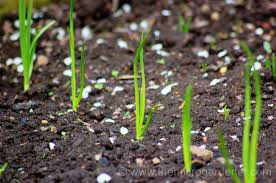
After sprouting and until the 3rd leaf emerges, the onion grows slowly, both above the ground and in the soil.
Once the 3rd leaf has emerged, the growth of the crop is accelerated. With the contribution of higher temperatures, the plants produce more and larger leaves in order to increase their photosynthetic activity and produce reserves of substances in order to form the bulbs.
The nutritional status of the plants at this stage is critical for the onset of bulb formation, the development of the crop, and the final yields.
Nitrogen (Ν) and Sulphur (S) promote the formation of the plant’s organs (leaves – root) during the early stages, and they boost an early and robust sprouting, which is required for bulb formation. An excessive Nitrogen supply should be avoided, because it leads to great losses and delays bulb formation.
Phosphorus (Ρ) is the most important element for the development of the root system, the strong establishment of the crop, and the onset of bulb formation. Due to the root system being thin and near the surface, onions do not absorb Phosphorus easily, which is why it should be emphasized in its application, both in basic and top fertilization.
Potassium (Κ) promotes the growth of the roots and the leaves, increases foliar activity so that bulb formation can begin, improves water absorption, and protects the crop against diseases and adverse weather conditions.
During the early stages, Calcium (Ca), Boron (Β), Zinc (Ζn), and Iron (Fe) are key elements for the formation and development of plant tissue, and they also increase the production of storage substances and boost bulb formation.
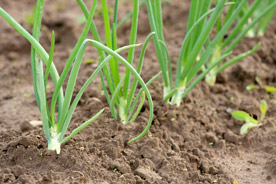
The leaves accumulate the products of photosynthesis and become enlarged at their base. Their diameter doubles in the soil compared to the collar, and the bulb is formed. New, larger leaves are produced, and the first three leaves gradually dry up. Length of daylight, temperature, and the nutritional condition of the plants are the main factors affecting bulb formation.
A good nutrient and water supply to the plants contributes to smooth development and completion of bulb formation.
Nitrogen (Ν) sustains the photosynthetic activity of the leaves required for bulb formation. The supply of the plants needs to be regular, without any exaggerations that would delay bulb formation.
Phosphorus (Ρ) and Potassium (Κ) play a significant part, because they are involved in the production and assimilation of the storage substances accumulated in the bulbs. The plants need to be adequately supplied with both of these nutrients through both basic and top fertilization.
Calcium (Ca) promotes healthy bulb formation, improves their qualitative characteristics, and increases their storability after the harvest.
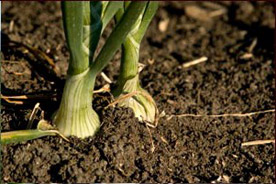
At this stage, the plants speed up the rate of leaf production. After the 13th leaf has emerged, the rest cannot grow above the ground, so they remain inside the bulb and increase its diameter. At the same time, the storage substances produced in the grown leaves migrate to the formed bulbs and contribute to their further enlargement.
During the time of bulb growth, onions have the highest requirements in nutrients and water, more so than at any other developmental stage.
Nitrogen (Ν) has a determining effect on the size of the bulbs. Its application at the early stages of enlargement boosts leaf production and protein accumulation in the bulbs. Adding Nitrogen too late and in excess should be avoided, because doing so leads to softer bulbs, thus damaging their quality and reducing their storability.
Phosphorus (P) is necessary for the size increase, formation of the outer layers, and ripening of the bulbs. Onions absorb large quantities of Phosphorus during this period and therefore requires an adequate phosphorus supply. Phosphorus deficiency leads to smaller bulb size, delays ripeness, and degrade their qualitative characteristics.
As the bulbs grow, their requirements in Potassium (Κ) are maximized. The latter contributes to carbohydrate production in the leaves and their migration to the bulbs. An adequate supply of Potassium during this time has a determining effect on the size and weight of the onions, their “sweetness”, and their storability after the harvest.
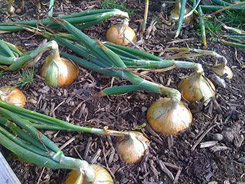
As the bulb enlargement comes to an end, the older leaves dry up while there is dryness at the ends of the newer leaves as well. At the same time, the outer layers of the bulb are formed. Gradually, all leaves lose their turgidity, shrivel up and fall to the ground, while the collar become feebler and can no longer support them.
Despite the fact that the plants’ photosynthetic activity halts, the bulbs keep growing during ripening due to the migration of the substances which had been stored in the leaves towards the bulbs.
The goal is to fulfill the requirements in the nutrients necessary for the development of a robust and rich root system, and to create adequate and early sprouting which will promote bulb formation. Due to the root system of the onion being thin and near the surface, and adequate Phosphorus and Potassium supply to the crop should be emphasized for the strengthening of the root system and the proper establishment of the crop.
The supply at this stage is:
Due to the root system being near the surface and the slow rate of absorption from the crop, Nitrogen in basic fertilization should be supplied through complex fertilizers rich in Ammoniacal Nitrogen. Fertilizers with high Nitric Nitrogen (ΝΟ3-) content led to great losses and are not considered suitable for this crop.
It is recommended, either the application of stabilized fertilizers (NutrActive) that protect the Ammoniacal Nitrogen, or the use of complex fertilizers with nanopolymer technology (Ωmega fert), which prevent the immobilization of nutrients in the soil and keep them active and assimilable for a long time.
Note: In order to better utilize the nutrients, basic fertilization can be applied in two doses. The first through integration before sowing and the second immediately after sprouting.
| Onion fertilizing | ||
|---|---|---|
| Type of Fertilizer | Stage of application | Dosage* (kg/ha) |
NutrActive special 12-12-17 (+30) +2MgO +TE | Basic fertilization | 800 – 1200 kg |
* The dosages mentioned are indicative. Regarding the fertilizing of crops, one should take into account the advice of local agronomists.
The goal is the formation of a rich leaf area, which will contribute to the onset of bulb formation. Nitrogen can be supplied in doses with two applications: one early on (between the 2nd and 3rd leaf) together with Calcium, and one before bulb formation (between the 4th and 5th leaf) together with Phosphorus.
The supply at this stage is:
● ⅓ of Nitrogen (Ν)
● ¼ of Phosphorus (P)
● The full amount of Calcium (Ca)
The use of Ammonium Sulphate Nitrate (ASN) with nanopolymer technology (Ωmega fert) or stabilized fertilizers (NutrActive), which perfectly cover the needs of the crop and boost bulb formation, is recommended. Part of the Nitrogen and the Potassium (if necessary) can be supplied through the irrigation system, in the form of Calcium Nitrate or Potassium Sulphate, thus covering the needs of the crop in Calcium and Potassium.
The goal of the second top fertilization is to fulfill the high nutritional requirements of bulb growth. The fertilizer should be applied early on, before bulb formation has concluded, and it should include all three macronutrients (Ν, Ρ, Κ) required for the size and weight increase of the bulbs.
The supply at this stage is:
The use of the compound multinutrient fertilizers (Complefert) is recommended, as they are highly soluble and supply the crop with fully assimilable forms of Ν, P, K, S, Mg, Trace Elements, as well as ensure high yields and qualitative characteristics of the produce.
| Onion fertilizing | ||
|---|---|---|
| Type of Fertilizer | Stage of application | Dosage* (kg/ha) |
NutrActive 27N 27-0-0 (+27) | Sprouting period | 300 – 500 kg |
Complefert CalMag 8-12-18 (+35) +3MgO +3CaO +TE | Onset of bulb enlargement | 400 – 500 kg |
* The dosages mentioned are indicative. Regarding the fertilizing of crops, one should take into account the advice of local agronomists.
| Basic fertilization | Sprouting stage
(3ο – 4ο leaf) |
Onset of bulb enlargement | |
|---|---|---|---|
| Onion | NutrActive® Ωmega fert® Complefert® Nutrifert® |
NutrActive® Novacan stabil® Fertammon® Nutrammon® |
Complefert® |
Basic fertilizers
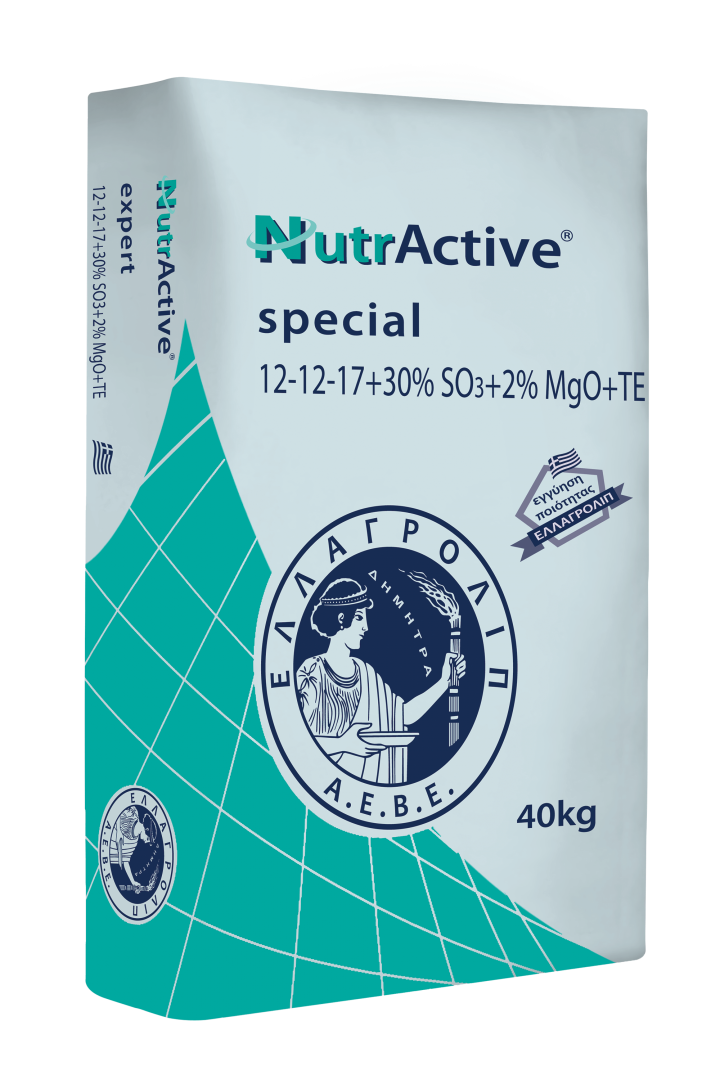
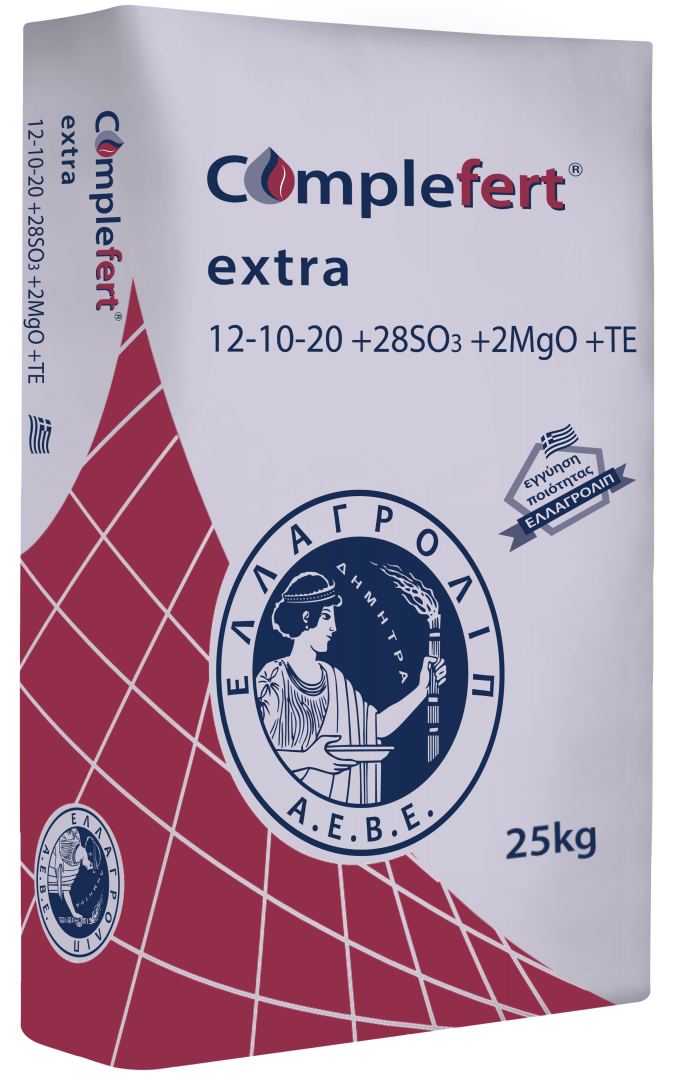
Top-dressing fertilizers
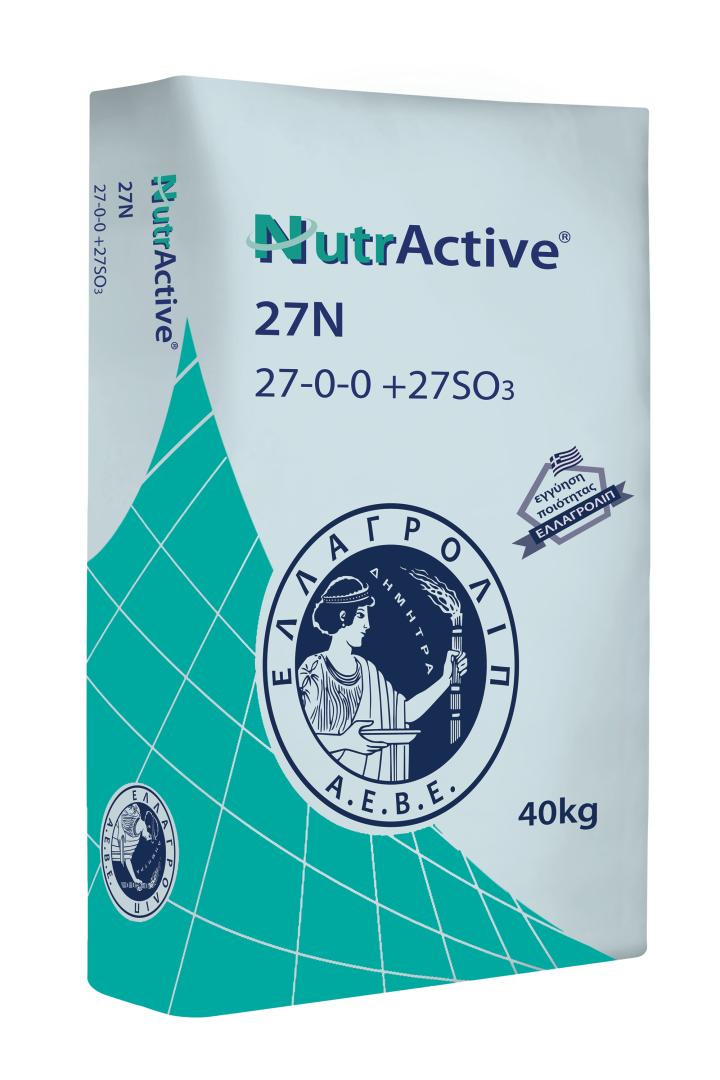
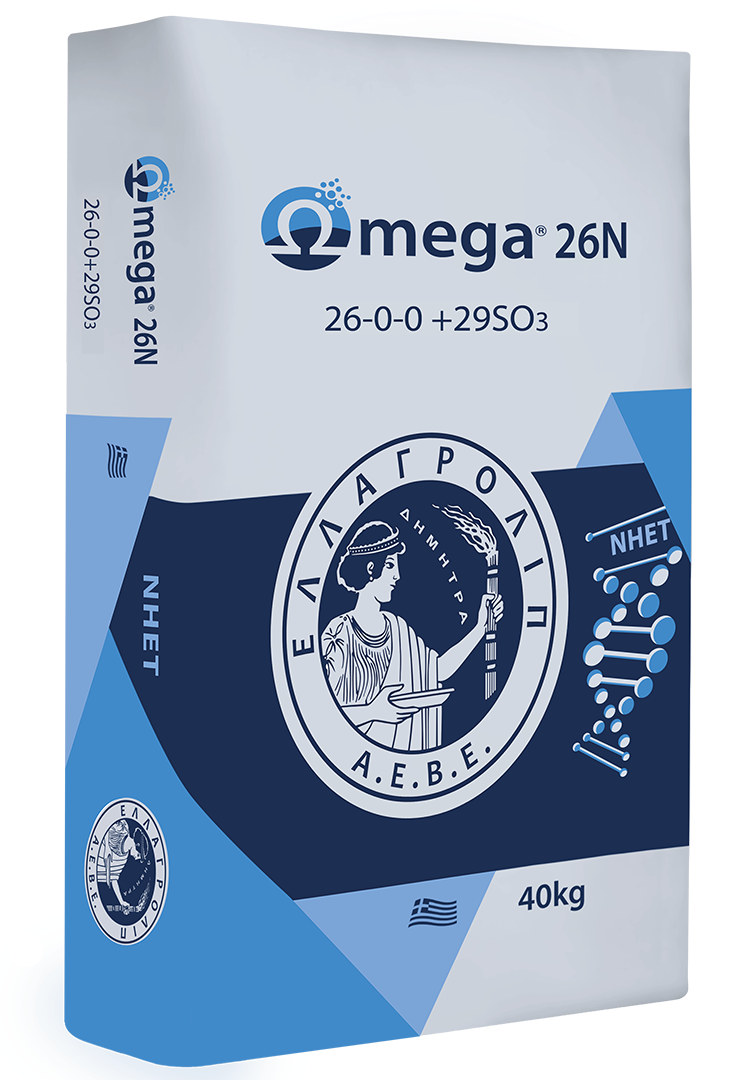
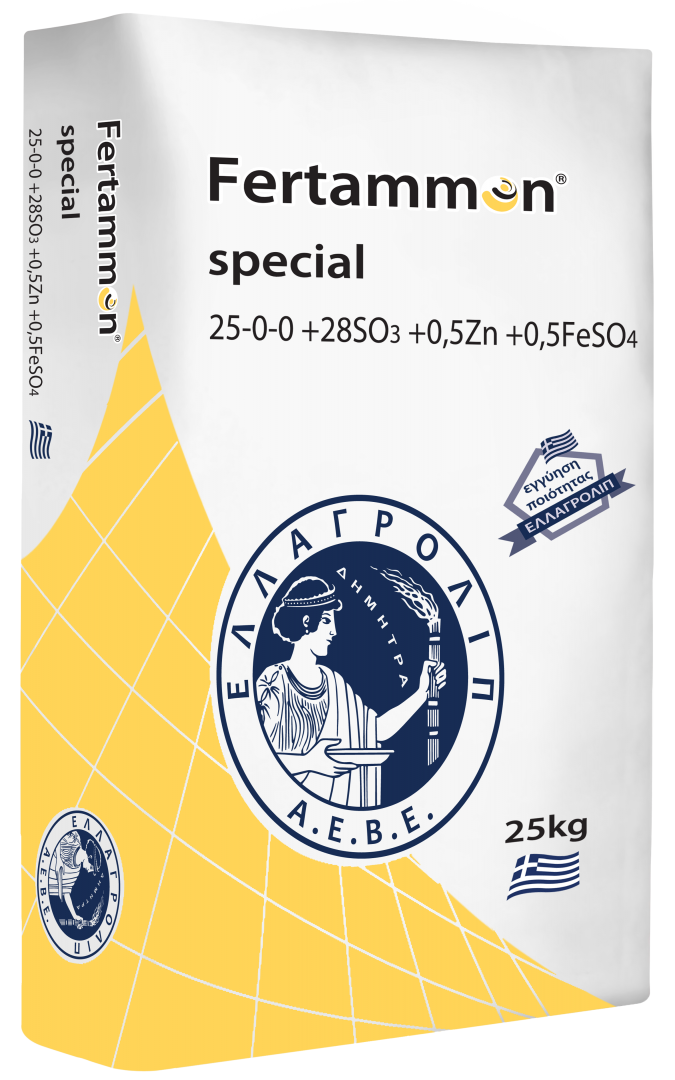
Onion crops thrive in a variety of soils. The soils considered ideal are those of medium and fine texture, sandy loam, warm, with good drainage and rich in organic matter. High yields are achieved in such soils, and bulbs with high quality characteristics are produced. Light sandy soils boost early ripeness, yet require more frequent irrigation and increased fertilizing.
Firm clay and saline soils prevent oxygenation and normal function of the root system, create diseases, and lower the yields and the quality of the produce.
Regarding acidity, onions favor slightly acidic to neutral soils (pH: 6.5 – 7). In soils with a pH lower than 5.5 or higher than 8, the plants exhibit reduced growth and yields, and correction of the soil acidity is therefore required.
Onion crops produce high yields and have high requirements in nutrients. Due to the root system being thin and near the surface, nutrient supply needs to be targeted and adequately cover all stages of the life cycle. In order to get satisfactory produce in terms of both quantity and quality, the requirements in fertilizer units depend on the type of crop.
| Nutritional requirements for 6 tons of dry onion (kg/ha) | |||||
|---|---|---|---|---|---|
| Type | Nitrogen
(N) |
Phosphorus
(P2O5) |
Potassium
(K2O) |
Calcium
(CaO) |
Sulfur
(S) |
| from seed | 200 – 260 | 140 – 180 | 220 – 260 | 60 – 80 | 40 – 60 |
| from onion sets | 160 – 220 | 120 – 160 | 180 – 220 | 40 – 60 | 30 – 60 |
| from spring onions | 180 – 220 | 80 – 120 | 160 – 180 | 40 – 60 | 20 – 40 |

After sprouting and until the 3rd leaf emerges, the onion grows slowly, both above the ground and in the soil.
Once the 3rd leaf has emerged, the growth of the crop is accelerated. With the contribution of higher temperatures, the plants produce more and larger leaves in order to increase their photosynthetic activity and produce reserves of substances in order to form the bulbs.
The nutritional status of the plants at this stage is critical for the onset of bulb formation, the development of the crop, and the final yields.
Nitrogen (Ν) and Sulphur (S) promote the formation of the plant’s organs (leaves – root) during the early stages, and they boost an early and robust sprouting, which is required for bulb formation. An excessive Nitrogen supply should be avoided, because it leads to great losses and delays bulb formation.
Phosphorus (Ρ) is the most important element for the development of the root system, the strong establishment of the crop, and the onset of bulb formation. Due to the root system being thin and near the surface, onions do not absorb Phosphorus easily, which is why it should be emphasized in its application, both in basic and top fertilization.
Potassium (Κ) promotes the growth of the roots and the leaves, increases foliar activity so that bulb formation can begin, improves water absorption, and protects the crop against diseases and adverse weather conditions.
During the early stages, Calcium (Ca), Boron (Β), Zinc (Ζn), and Iron (Fe) are key elements for the formation and development of plant tissue, and they also increase the production of storage substances and boost bulb formation.

The leaves accumulate the products of photosynthesis and become enlarged at their base. Their diameter doubles in the soil compared to the collar, and the bulb is formed. New, larger leaves are produced, and the first three leaves gradually dry up. Length of daylight, temperature, and the nutritional condition of the plants are the main factors affecting bulb formation.
A good nutrient and water supply to the plants contributes to smooth development and completion of bulb formation.
Nitrogen (Ν) sustains the photosynthetic activity of the leaves required for bulb formation. The supply of the plants needs to be regular, without any exaggerations that would delay bulb formation.
Phosphorus (Ρ) and Potassium (Κ) play a significant part, because they are involved in the production and assimilation of the storage substances accumulated in the bulbs. The plants need to be adequately supplied with both of these nutrients through both basic and top fertilization.
Calcium (Ca) promotes healthy bulb formation, improves their qualitative characteristics, and increases their storability after the harvest.

At this stage, the plants speed up the rate of leaf production. After the 13th leaf has emerged, the rest cannot grow above the ground, so they remain inside the bulb and increase its diameter. At the same time, the storage substances produced in the grown leaves migrate to the formed bulbs and contribute to their further enlargement.
During the time of bulb growth, onions have the highest requirements in nutrients and water, more so than at any other developmental stage.
Nitrogen (Ν) has a determining effect on the size of the bulbs. Its application at the early stages of enlargement boosts leaf production and protein accumulation in the bulbs. Adding Nitrogen too late and in excess should be avoided, because doing so leads to softer bulbs, thus damaging their quality and reducing their storability.
Phosphorus (P) is necessary for the size increase, formation of the outer layers, and ripening of the bulbs. Onions absorb large quantities of Phosphorus during this period and therefore requires an adequate phosphorus supply. Phosphorus deficiency leads to smaller bulb size, delays ripeness, and degrade their qualitative characteristics.
As the bulbs grow, their requirements in Potassium (Κ) are maximized. The latter contributes to carbohydrate production in the leaves and their migration to the bulbs. An adequate supply of Potassium during this time has a determining effect on the size and weight of the onions, their “sweetness”, and their storability after the harvest.

As the bulb enlargement comes to an end, the older leaves dry up while there is dryness at the ends of the newer leaves as well. At the same time, the outer layers of the bulb are formed. Gradually, all leaves lose their turgidity, shrivel up and fall to the ground, while the collar become feebler and can no longer support them.
Despite the fact that the plants’ photosynthetic activity halts, the bulbs keep growing during ripening due to the migration of the substances which had been stored in the leaves towards the bulbs.
The goal is to fulfill the requirements in the nutrients necessary for the development of a robust and rich root system, and to create adequate and early sprouting which will promote bulb formation. Due to the root system of the onion being thin and near the surface, and adequate Phosphorus and Potassium supply to the crop should be emphasized for the strengthening of the root system and the proper establishment of the crop.
The supply at this stage is:
Due to the root system being near the surface and the slow rate of absorption from the crop, Nitrogen in basic fertilization should be supplied through complex fertilizers rich in Ammoniacal Nitrogen. Fertilizers with high Nitric Nitrogen (ΝΟ3-) content led to great losses and are not considered suitable for this crop.
It is recommended, either the application of stabilized fertilizers (NutrActive) that protect the Ammoniacal Nitrogen, or the use of complex fertilizers with nanopolymer technology (Ωmega fert), which prevent the immobilization of nutrients in the soil and keep them active and assimilable for a long time.
Note: In order to better utilize the nutrients, basic fertilization can be applied in two doses. The first through integration before sowing and the second immediately after sprouting.
| Onion fertilizing | ||
|---|---|---|
| Type of Fertilizer | Stage of application | Dosage* (kg/ha) |
NutrActive special 12-12-17 (+30) +2MgO +TE | Basic fertilization | 800 – 1200 kg |
* The dosages mentioned are indicative. Regarding the fertilizing of crops, one should take into account the advice of local agronomists.
The goal is the formation of a rich leaf area, which will contribute to the onset of bulb formation. Nitrogen can be supplied in doses with two applications: one early on (between the 2nd and 3rd leaf) together with Calcium, and one before bulb formation (between the 4th and 5th leaf) together with Phosphorus.
The supply at this stage is:
● ⅓ of Nitrogen (Ν)
● ¼ of Phosphorus (P)
● The full amount of Calcium (Ca)
The use of Ammonium Sulphate Nitrate (ASN) with nanopolymer technology (Ωmega fert) or stabilized fertilizers (NutrActive), which perfectly cover the needs of the crop and boost bulb formation, is recommended. Part of the Nitrogen and the Potassium (if necessary) can be supplied through the irrigation system, in the form of Calcium Nitrate or Potassium Sulphate, thus covering the needs of the crop in Calcium and Potassium.
The goal of the second top fertilization is to fulfill the high nutritional requirements of bulb growth. The fertilizer should be applied early on, before bulb formation has concluded, and it should include all three macronutrients (Ν, Ρ, Κ) required for the size and weight increase of the bulbs.
The supply at this stage is:
The use of the compound multinutrient fertilizers (Complefert) is recommended, as they are highly soluble and supply the crop with fully assimilable forms of Ν, P, K, S, Mg, Trace Elements, as well as ensure high yields and qualitative characteristics of the produce.
| Onion fertilizing | ||
|---|---|---|
| Type of Fertilizer | Stage of application | Dosage* (kg/ha) |
NutrActive 27N 27-0-0 (+27) | Sprouting period | 300 – 500 kg |
Complefert CalMag 8-12-18 (+35) +3MgO +3CaO +TE | Onset of bulb enlargement | 400 – 500 kg |
* The dosages mentioned are indicative. Regarding the fertilizing of crops, one should take into account the advice of local agronomists.
| Basic fertilization | Sprouting stage
(3ο – 4ο leaf) |
Onset of bulb enlargement | |
|---|---|---|---|
| Onion | NutrActive® Ωmega fert® Complefert® Nutrifert® |
NutrActive® Novacan stabil® Fertammon® Nutrammon® |
Complefert® |
Basic fertilizers


Top-dressing fertilizers



